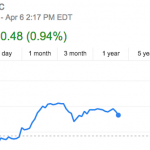
What’s the difference between $1,000 and $1,000,000?
To make $1,000 with a blog, all you need is a few customers. Provide a few services, post a couple ad spots, and land a handful of consulting gigs. It’s not too hard.
To make $1,000,000 with a blog, you need to have a full-blown, legitimate business behind it. If you’re like most bloggers, this is your goal.
The good news is that it’s been done before. To learn from their successes, I’d like to spotlight three multi-million-dollar internet companies that were started by bloggers.
SitePoint.com Led to 99designs
99designs, now a 64-person company, was founded by Matt Mickiewicz and Mark Harbottle in 2008. Having paid out over $38 million to their users, they’re the world’s largest online marketplace for outsourcing graphic design.
Co-founder Matt Mickiewicz describes how 99designs got started through his blog, SitePoint.com:
“In 2006, some designers in the SitePoint community began challenging one another to games of ‘Photoshop Tennis’ — essentially coming up with fictional projects and competing to see who could create the best design. They did this simply to practice their design skills and because they were passionate about graphic design. Eventually, other members of the SitePoint community jumped in and started offering cash awards for work on real projects, such as logos and WordPress themes.
…
“After a while, when it was clear that this organic model had lasting power, we began charging each ‘contest proctor’ $10 to post a request for design work in our forums and we quickly started generating thousands in revenue. We chose to invest that revenue by hiring one developer and one designer to hack together some basic software and a user interface to improve the flow of the process and make it more user-friendly on all fronts.”
Takeaways from 99designs
Be profitable from the beginning. Since 99designs started as an offshoot project within the forums of Sitepoint.com, they were able to generate revenue immediately. Then they used that revenue to hire a designer and developer to build the first version of 99designs.com.
Create out of an existing community. One of the under-used benefits of having a blog is having direct access to a specific group of people. If you ask them and observe their interactions, you’ll find out what they want and what they’re willing to pay for. Then, when you launch, you’ll already have an engaged audience.
QuickSprout.com Led to KISSmetrics
Neil Patel published his first QuickSprout blog post in April 2007. At that point, Neil had been working on his startup, Crazy Egg, for a year-and-a-half and he had been consulting through his Internet marketing agency for a few years.
On his about page, Neil describes what it was like at that time struggling to make money before he had QuickSprout:
“Because we needed income to make up for the losses in Crazy Egg, we continued to run our Internet marketing agency. Although we were making millions from the consulting company, none of us really enjoyed what we were doing.”
So he started QuickSprout, continued learning through Crazy Egg (and a few other projects), and decided to start another business with his co-founder:
“With our new found knowledge, we decided to create another analytics company that would solve a much larger problem than what Crazy Egg solved. Crazy Egg was doing well, but it is never going to be that 100 million dollar company because the market size for that one product is very limited.
“The product that we happened to come up with was KISSmetrics.”
KISSmetrics wasn’t a direct spin-off of QuickSprout like 99designs was from Sitepoint, but Neil had written well over 100 blog posts on QuickSprout prior to starting KISSmetrics in May 2008. I can’t help but think that blogging had a substantial impact on the success of the now 27-person company.
In fact, while pulling together Web Domination, Neil revealed to us that between all three of his sites, he gets the highest return on investment from blogging.
Takeaways from KISSmetrics
Expand to software. Neil made a small fortune through his consulting business but didn’t start enjoying what he was doing until he got into the software business. As you build your blog, think about different software that you can create for your audience.
Blog for traffic. Neil Patel, perhaps the most sought-after SEO consultant in the world, says that he gets the highest marketing return on investment within his companies from blogging.
Copyblogger.com Led to Copyblogger Media
Before starting Copyblogger.com in 2006, Brian Clark was an attorney.
When TopRankBlog.com asked him how he made the transition from attorney to blogger, he said:
“Easy… I hated practicing law and I was fascinated by the Internet. The transition was extreme I suppose, but I always had a thing for writing, so I started creating online content over a decade ago. Now it’s just part of me.”
For four years, Brian and crew pumped out post after post, several times per week with a smattering of guest posts in between. With a network of other projects and partnerships brewing, Brian brought them together in 2010 to create Copyblogger Media:
“Over the last 4 years, I’ve launched several companies from this simple blog of mine. The idea that building an audience with content and letting the revenue-generating ideas, products, and services reveal themselves based on what the audience actually wants has worked out amazingly well.”
Today, with over 20 employees, Copyblogger Media is the parent company for a number of online services and properties including StudioPress, Scribe, Premise, Synthesis,, Authority Rules, and Teaching Sells.
In the Copyblogger Media press release, Brian continued to say:
“Any great company exists not for its shareholders or employees, but for the people it serves. And we’re aiming to be a great company.”
Takeaways from Copyblogger Media
Use your blog as a platform to launch other businesses. One reason Copyblogger.com does so well to attract an audience is that everything on the site is totally free. Despite one million monthly page views, Copyblogger.com doesn’t make a dime. Instead, all of their revenue-generating platforms exist on other domains and they use Copyblogger to make people aware of them.
Attract great people through blogging. If Copyblogger wasn’t on the upslope when Brian first reached out to all of his existing partnerships, they wouldn’t have been as willing to work with him. As it turns out, the blog gave him credibility and a tool to barter with. Not to mention, all of the great readers he accrued along the way.
My Favorite Companies have High-Profile Blogs
The purpose of marketing is to build an audience of people who love what you sell. And I think the best way to build and nurture an audience, especially online, is with a blog.
Here are a number of other companies who host great blogs:
- 37signals has Signal vs. Noise.
- DIYthemes has The Thesis Statement.
- SEOmoz has the SEOmoz Blog.
- Freshbooks has a freelance-oriented blog.
- Awesome Motive Inc. has WPBeginner and List25.
- Johnny Cupcakes has a photo blog as its homepage.
- Even Google has an Official Blog.
You’re on the Right Path
Maybe you haven’t cracked the code on how to make even $1,000 with your blog. That’s ok.
Take comfort in the fact that you’re learning how to build an audience through a blog. At the very least, you’re developing a skill that’s valuable to other people.
Do you know of any other companies that were started by bloggers?
Photo by: Brian Tomlinson











